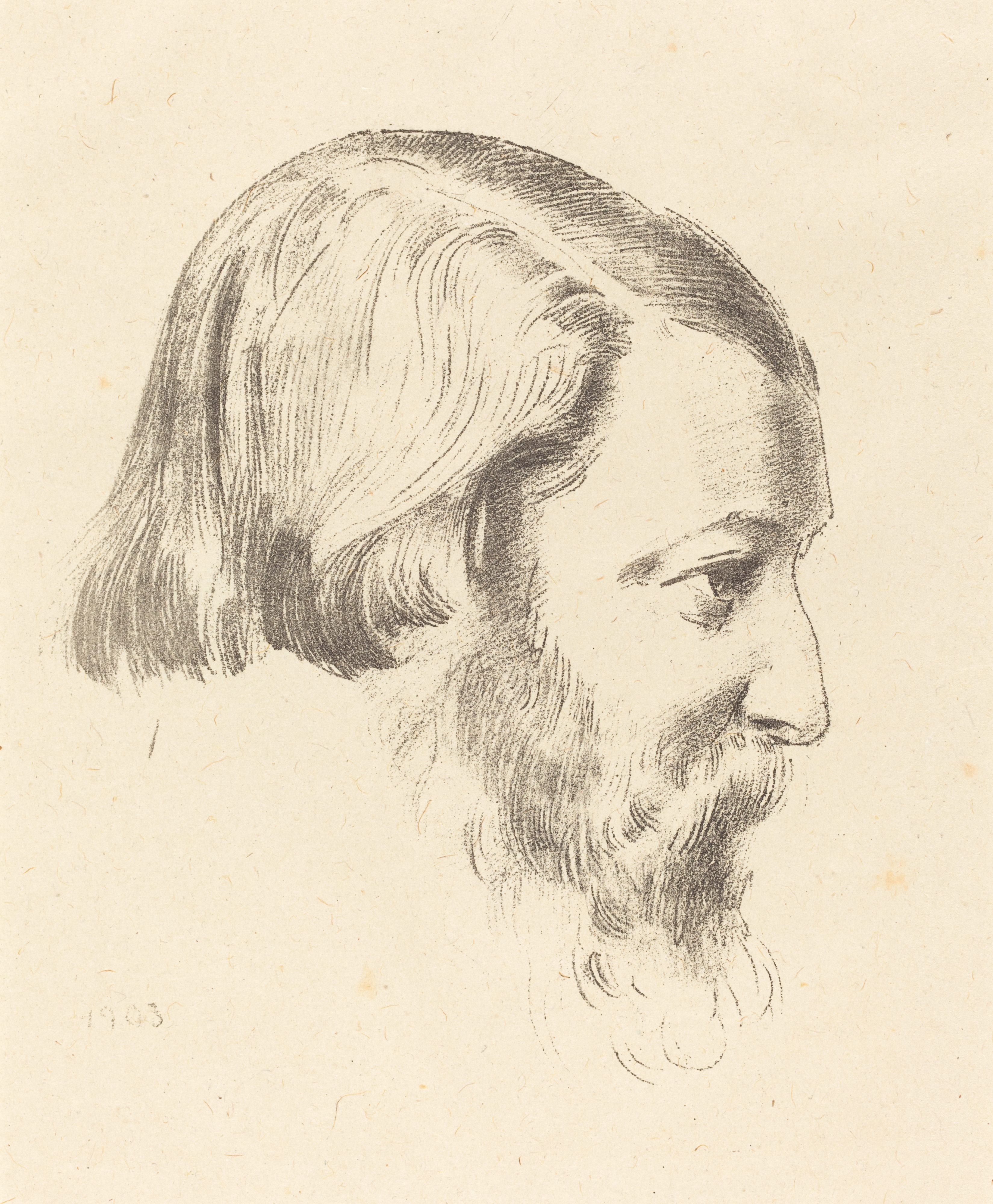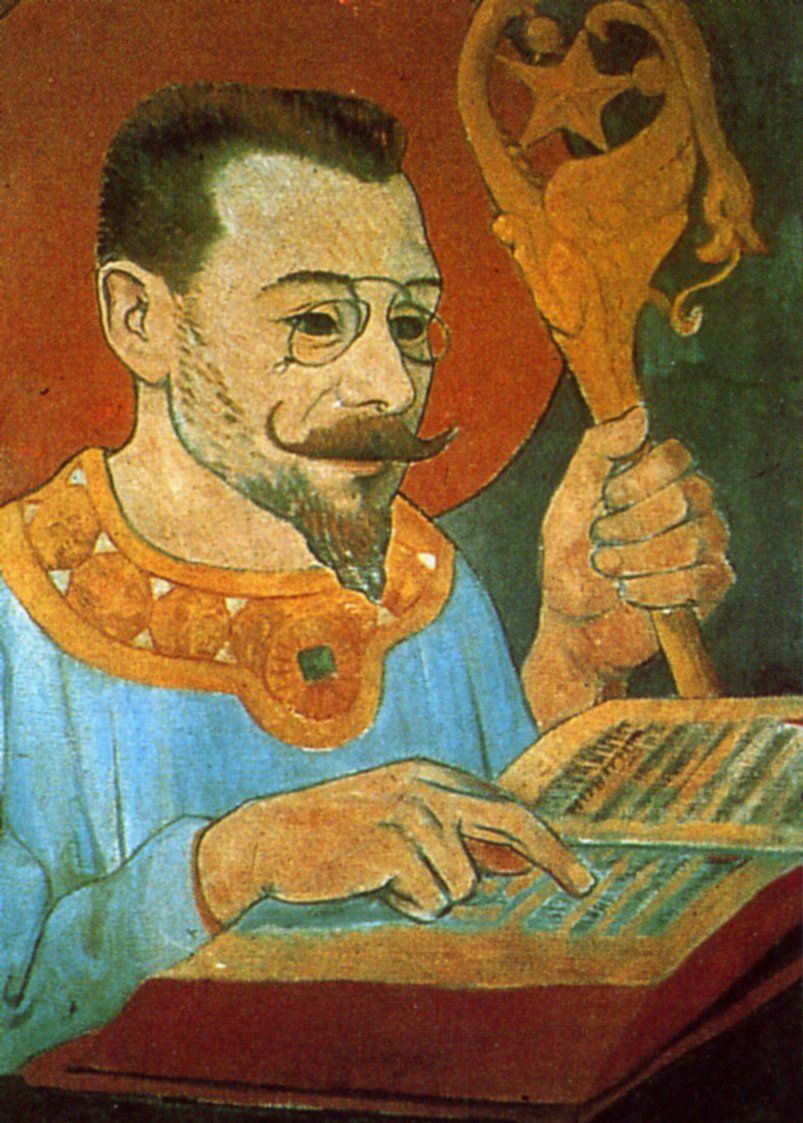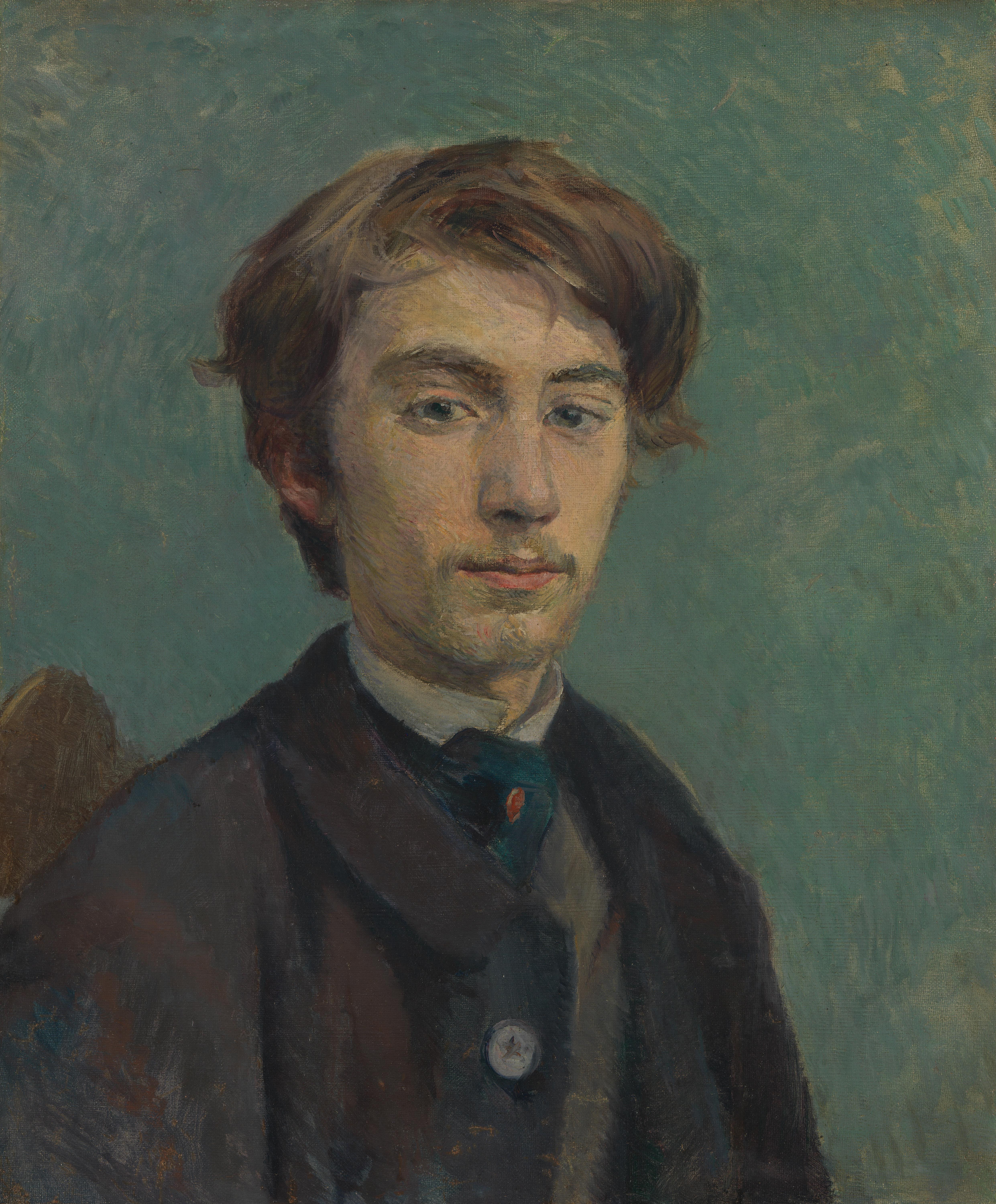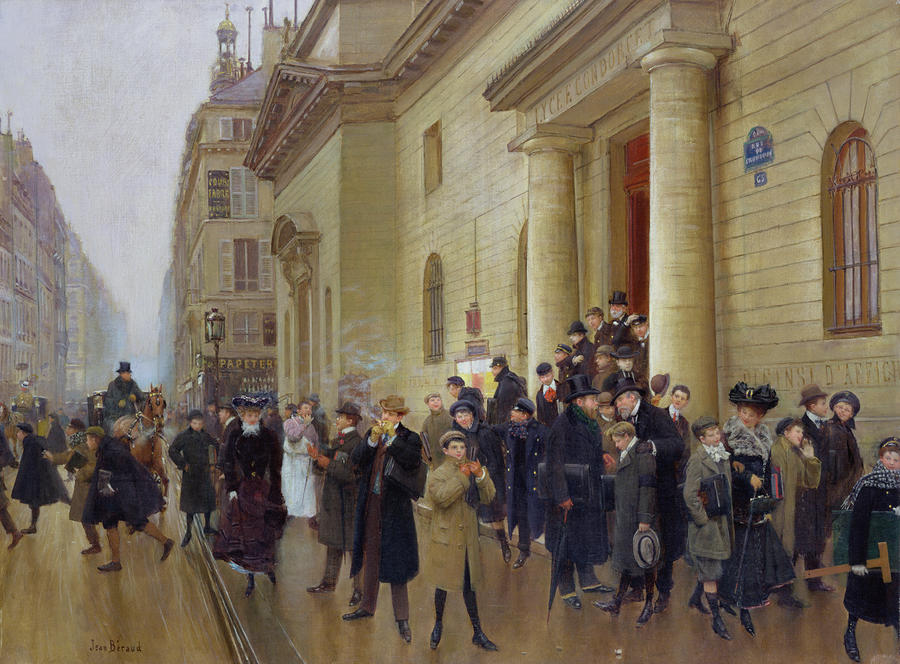|
The Talisman (painting)
''The Talisman'' is a painting by French artist Paul Sérusier made in 1888, under the guidance of Paul Gauguin at the artist's colony of Pont-Aven in Brittany. Formally known as ''The Bois d'Amour at Pont Aven'', it was called ''The Talisman'' and became the starting point and icon of the group of young painters called The Nabis. It was a landmark in early Post-Impressionism, Synthetism, and Cloisonnism. It is now in the Musée d'Orsay in Paris. History In October 1888 the young painter Paul Sérusier, age twenty-four, traveled to the artist's colony at Pont-Aven in Brittany, with a letter of introduction to Paul Gauguin. Sérusier had completed his studies at the Lycée Fontaine (now the Lycée Condorcet) in Paris, where he had met other aspiring artists, including Pierre Bonnard and Maurice Denis, the future Nabis. Together they had enrolled at a private art school, the Académie Julian. With his letter to Gauguin from Émile Bernard, he intended to make studies of na ... [...More Info...] [...Related Items...] OR: [Wikipedia] [Google] [Baidu] |
Paul Sérusier
Paul Sérusier (9 November 1864 – 7 October 1927) was a French painter who was a pioneer of abstract art and an inspiration for the avant-garde Nabis movement, Synthetism and Cloisonnism. Education Sérusier was born in Paris. He studied at the Académie Julian and was a monitor there in the mid-1880s. In the summer of 1888 he travelled to Pont-Aven and joined the small group of artists centered there around Paul Gauguin. While at the Pont-Aven artist's colony he painted a picture that became known as '' The Talisman'', under the close supervision of Gauguin. The picture was an extreme exercise in Cloisonnism that approximated to pure abstraction. He was a Post-Impressionist painter, a part of the group of painters called Les Nabis. Sérusier, along with Paul Gauguin, named the group. Pierre Bonnard, Édouard Vuillard and Maurice Denis became the best known of the group, but at the time they were somewhat peripheral to the core group. In 1892 Sérusier met and befriende ... [...More Info...] [...Related Items...] OR: [Wikipedia] [Google] [Baidu] |
Pierre Bonnard
Pierre Bonnard (; 3 October 186723 January 1947) was a French painter, illustrator and printmaker, known especially for the stylized decorative qualities of his paintings and his bold use of color. A founding member of the Post-Impressionist group of avant-garde painters Les Nabis, his early work was strongly influenced by the work of Paul Gauguin, as well as the prints of Hokusai and other Japanese artists. Bonnard was a leading figure in the transition from Impressionism to Modernism. He painted landscapes, urban scenes, portraits and intimate domestic scenes, where the backgrounds, colors and painting style usually took precedence over the subject. Early life and education Pierre Bonnard was born in Fontenay-aux-Roses, Hauts-de-Seine on 3 October 1867. His mother, Élisabeth Mertzdorff, was from Alsace. His father, Eugène Bonnard, was from the Dauphiné, and was a senior official in the French Ministry of War. He had a brother, Charles, and a sister, Andrée, who in 18 ... [...More Info...] [...Related Items...] OR: [Wikipedia] [Google] [Baidu] |
Châteauneuf-du-Faou
Châteauneuf-du-Faou () is a commune in the Finistère department of Brittany in north-western France. Geography Châteauneuf-du-Faou is located in the middle of Brittany, between Monts d'Arrée and Montagne Noire. The town is built on a hill overlooking the Canal de Nantes à Brest, which is the canalized river Aulne. The bridge over this waterway was built in 1638, when Louis XIII was king of France, and is known as the "Old King's Bridge". Map Population International relations Châteauneuf-du-Faou is twinned with the English town of South Brent, and the Spanish town Chinchón. Name The inhabitants of Châteauneuf-du-Faou are known in French as ''Châteauneuviens''. The Breton language On November 6, 2006, the municipality launched a linguistic plan through Ya d'ar brezhoneg. In 2008, 10.4% of primary-school children in the area attended bilingual schools. History There is strong evidence that people have lived in this area for thousands of years. A large number of ... [...More Info...] [...Related Items...] OR: [Wikipedia] [Google] [Baidu] |
Desiderius Lenz
Peter Lenz (1832–1928), afterwards Desiderius Lenz, was a German artist who became a Benedictine monk. Together with Gabriel Wüger, he founded the Beuron Art School. Background Peter Lenz was born in 1832 in Haigerloch, Baden-Württemberg. From 1849 he studied at the Academy of Fine Arts, Munich as a pupil of the painter and sculptor Max von Widnmann and the muralist Wilhelm von Kaulbach, where he learnt about ancient Greek art, medieval German painting and artists of the Italian Renaissance. In 1851 he joined the Union of Artist Pupils at the Academy, and met Jakob Wüger. Although of differing characters, the two became friends and worked together. Peter von Cornelius was a significant figure in Lenz's artistic development, and promoted his career. Cornelius had engaged in the Nazarene Brotherhood or ''Lukasbund'' at Rome between 1811 and 1819, where he worked with Friedrich Wilhelm Schadow, a Lutheran convert to Roman Catholicism and founder of the Düsseldorf school of ... [...More Info...] [...Related Items...] OR: [Wikipedia] [Google] [Baidu] |
Esotericism
Western esotericism, also known as esotericism, esoterism, and sometimes the Western mystery tradition, is a term scholars use to categorise a wide range of loosely related ideas and movements that developed within Western society. These ideas and currents are united since they are largely distinct both from orthodox Judeo-Christian religion and Enlightenment rationalism. Esotericism has pervaded various forms of Western philosophy, religion, pseudoscience, art, literature, and music—and continues to influence intellectual ideas and popular culture. The idea of grouping a wide range of Western traditions and philosophies together under the term ''esotericism'' developed in Europe during the late seventeenth century. Various academics have debated various definitions of Western esotericism. One view adopts a definition from certain esotericist schools of thought themselves, treating "esotericism" as a perennial hidden inner tradition. A second perspective sees esotericism as ... [...More Info...] [...Related Items...] OR: [Wikipedia] [Google] [Baidu] |
Boulevard Du Montparnasse
{{Paris-road-stub ...
The Boulevard du Montparnasse is a two-way boulevard in Montparnasse, in the 6th, 14th and 15th arrondissements in Paris. Situation The boulevard joins the place Léon Paul Fargue and place Camille Jullian. The Tour Montparnasse and place du 18 juin 1940 also found along it. See also * Cimetière du Montparnasse * Gare Montparnasse Montparnasse Montparnasse Montparnasse Montparnasse Montparnasse () is an area in the south of Paris, France, on the left bank of the river Seine, centred at the crossroads of the Boulevard du Montparnasse and the Rue de Rennes, between the Rue de Rennes and boulevard Raspail. Montparnasse has bee ... [...More Info...] [...Related Items...] OR: [Wikipedia] [Google] [Baidu] |
Paul Ranson
Paul-Élie Ranson (29 March 1861 – 20 February 1909) was a French painter and writer associated with Les Nabis. Biography He was born in Limoges. His mother died in childbirth, so he was raised and educated by his grandparents and his father, , a politician who served two terms as Mayor of Limoges. He received his first drawing lessons from his grandfather, Jean-Jacques Maquart, and was enrolled at the École des Beaux-Arts Appliqués à l'Industrie in 1877. In 1884, he married his first cousin, Marie-France Rousseau, and studied for a time at the École Nationale Supérieure des Arts Décoratifs before transferring to the Académie Julian, where he studied with Tony Robert-Fleury from 1886 to 1891. In 1888, he became one of the five founding members of "Les Nabis", a group that played a large role in the transition from Impressionism to the various styles of Modern art. His fellow founders were Paul Sérusier, Henri-Gabriel Ibels, Pierre Bonnard, and Maurice Denis. In ... [...More Info...] [...Related Items...] OR: [Wikipedia] [Google] [Baidu] |
Émile Bernard
Émile Henri Bernard (28 April 1868 – 16 April 1941) was a French Post-Impressionist painter and writer, who had artistic friendships with Vincent van Gogh, Paul Gauguin and Eugène Boch, and at a later time, Paul Cézanne. Most of his notable work was accomplished at a young age, in the years 1886 through 1897. He is also associated with Cloisonnism and Synthetism, two late 19th-century art movements. Less known is Bernard's literary work, comprising plays, poetry, and art criticism as well as art historical statements that contain first-hand information on the crucial period of modern art to which Bernard had contributed. Biography Émile Henri Bernard was born in Lille, France, in 1868. As in his younger years his sister was sick, Émile was unable to receive much attention from his parents; he therefore stayed with his grandmother, who owned a laundry in Lille, employing more than twenty people. She was one of the greatest supporters of his art. The family moved to Pari ... [...More Info...] [...Related Items...] OR: [Wikipedia] [Google] [Baidu] |
Académie Julian
The Académie Julian () was a private art school for painting and sculpture founded in Paris, France, in 1867 by French painter and teacher Rodolphe Julian (1839–1907) that was active from 1868 through 1968. It remained famous for the number and quality of artists who attended during the great period of effervescence in the arts in the early twentieth century. After 1968, it integrated with . History Rodolphe Julian established the Académie Julian in 1868 at the Passage des Panoramas, as a private studio school for art students.Tate Gallery"Académie Julian."/ref> The Académie Julian not only prepared students for the exams at the prestigious École des Beaux-Arts, but offered independent alternative education and training in arts. "Founded at a time when art was about to undergo a long series of crucial mutations, the Academie Julian played host to painters and sculptors of every kind and persuasion and never tried to make them hew to any one particular line". In 1880, wo ... [...More Info...] [...Related Items...] OR: [Wikipedia] [Google] [Baidu] |
Les Nabis
Les Nabis (French: les nabis, ) were a group of young French artists active in Paris from 1888 until 1900, who played a large part in the transition from impressionism and academic art to abstract art, symbolism and the other early movements of modernism. The members included Pierre Bonnard, Maurice Denis, Paul Ranson, Édouard Vuillard, Ker-Xavier Roussel, Félix Vallotton, Paul Sérusier and Auguste Cazalis. Most were students at the Académie Julian in Paris in the late 1880s. The artists shared a common admiration for Paul Gauguin and Paul Cézanne and a determination to renew the art of painting, but varied greatly in their individual styles. They believed that a work of art was not a depiction of nature, but a synthesis of metaphors and symbols created by the artist. In 1900, the artists held their final exhibition and went their separate ways.Bétard, Daphne, ''La révolution Nabie'', in ''Les Nabis et le décor'', Beaux-Arts Éditions, pp. 8-21 Etymology The Nabis took the ... [...More Info...] [...Related Items...] OR: [Wikipedia] [Google] [Baidu] |
Maurice Denis
Maurice Denis (; 25 November 1870 – 13 November 1943) was a French painter, decorative artist, and writer. An important figure in the transitional period between impressionism and modern art, he is associated with '' Les Nabis'', symbolism, and later neo-classicism."Denis, Maurice." Belinda Thomson, Grove Art Online, Oxford Art Online, Oxford University Press. Retrieved 18 June 2014. His theories contributed to the foundations of cubism, fauvism, and abstract art. Following the First World War, he founded the Ateliers d'Art Sacré (Workshops of Sacred Art), decorated the interiors of churches, and worked for a revival of religious art. Biography Early life Maurice Denis was born 25 November 1870, in Granville, Manche, a coastal town in the Normandy region of France. His father was of modest peasant origins; after four years in the army, he went to work at the railroad station. His mother, the daughter of a miller, worked as a seamstress. After their marriage in 1865, they mo ... [...More Info...] [...Related Items...] OR: [Wikipedia] [Google] [Baidu] |
Lycée Condorcet
The Lycée Condorcet () is a school founded in 1803 in Paris, France, located at 8, rue du Havre, in the city's 9th arrondissement. It is one of the four oldest high schools in Paris and also one of the most prestigious. Since its inception, various political eras have seen it given a number of different names, but its identity today honors the memory of the Marquis de Condorcet. The school provides secondary education as part of the French education system. Henri Bergson, Horace Finaly, Claude Lévi-Strauss, Marcel Proust, Francis Poulenc and Paul Verlaine are some of the students who attended the Lycée Condorcet. Some of the school's famous teachers include Jean Beaufret, Paul Bénichou, Jean-Marie Guyau, Jean-Paul Sartre, and Stéphane Mallarmé. History During the greater part of the nineteenth century, the school was the "great Liberal High School" on the right bank with its relatively flexible regime that was chosen by the progressive bourgeoisie for its sons. It is amo ... [...More Info...] [...Related Items...] OR: [Wikipedia] [Google] [Baidu] |






.jpg)
